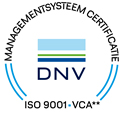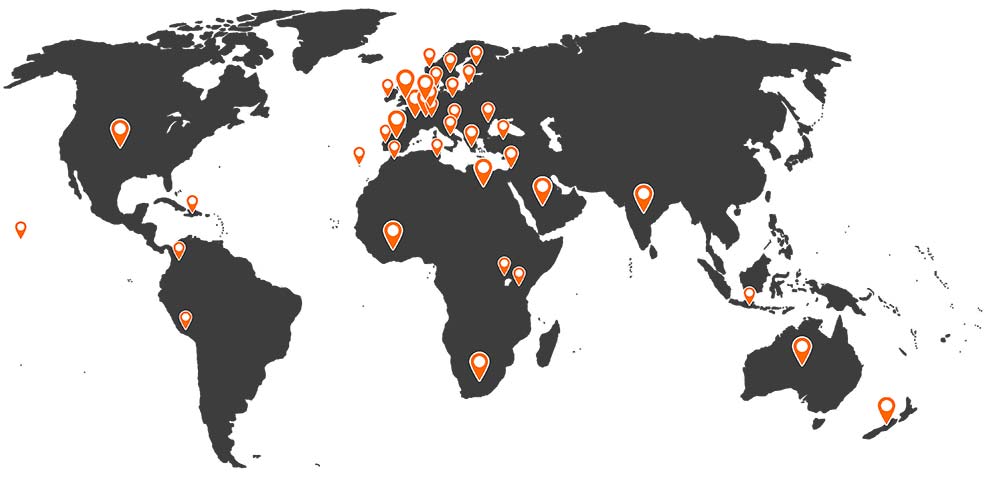Plant Lighting: year-round cultivation trials in climate chambers
Plant Lighting in Bunnik has significantly expanded its research capacity with six sophisticated environmental chambers of Nijssen. "Climate chambers allow representative and reproducible research to do - plus year round and non-localized," says director / researcher Sander Hogewoning.
Plant Lighting conducts fundamental botanical research commissioned by, among others, greenhouse horticulture companies, growers' cooperatives, horticultural suppliers, seed breeders and the government. Most cultivation trials are still carried out in greenhouses or in the field. Weather conditions are an important factor in this. "On hot days it can get so hot in the greenhouse that the temperature cannot be cooled down sufficiently", says Sander Hogewoning. "Or it is much too dark, during cloudy weeks or snowfall. In the field, tests can also be disturbed by hailstorms, pests or predation. To get really reliable research results you have to repeat tests over a period of 3-5 years. That was still possible twenty years ago, but with the rapid developments nowadays everyone wants to see results and conclusions within six months. Therefore, we do much of our research in climate chambers under controlled conditions."
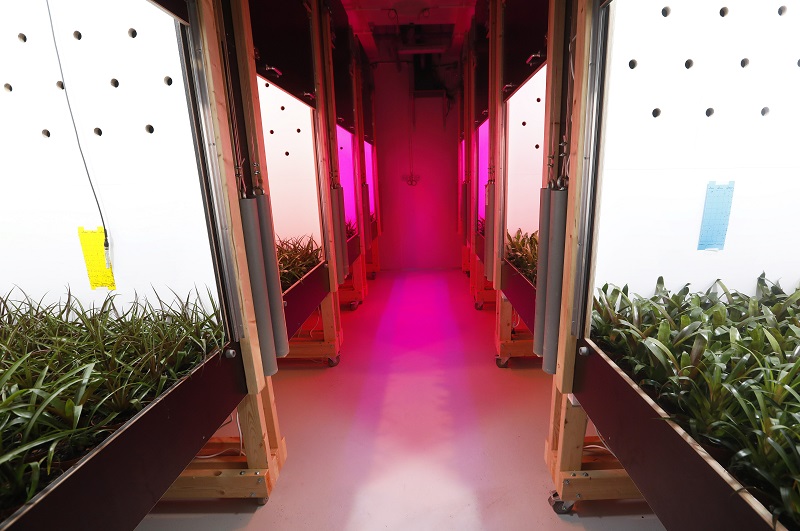
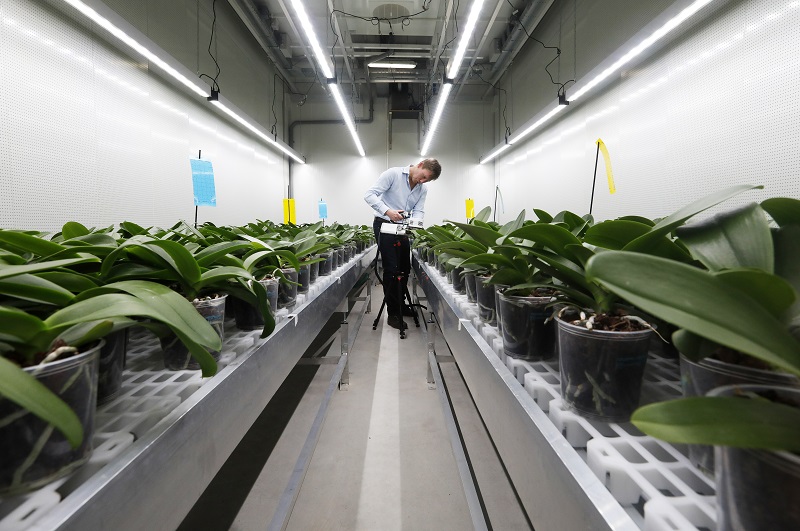
Sunlight simulators
In order to simulate the natural conditions at a production location as closely as possible, Plant Lighting has equipped the climate chambers with sunlight simulators from SLHolland. This is a fully LED-based patented system that simulates sunlight in the range 360-780 nm almost perfectly. “Based on ten-year averages of the weather at a specific location, we can simulate the local daylight conditions - with the same color spectrum, the natural patterns of cloud cover and the changing light spectrum during twilight at sunrise and sunset. This allows us to carry out realistic, representative and reproducible research for every place in the world and for every season of the year.
Optimization of winter cultivation
In high-tech greenhouse horticulture, extra lighting and CO2 are already being dosed all year round. Production improvement in the winter period is one of the major challenges for this sector. In the months of November to February there is simply too little daylight in the Netherlands for good cultivation. During this periode, full lighting is provided with the orange SON-t lamps and increasingly also with LED. Plant Lighting is commissioned by growers to investigate how crops can be illuminated as efficiently as possible. The performance of the crop can be compared under the different light spectra and lighting systems. Humidity, CO2 dosing or the amount of fertilization can also be optimized.
Comply with energy agreements
Growers are looking for ways to increase their efficiency - through cost savings, smarter cultivation or higher yields. Energy saving is the central issue, especially in greenhouse horticulture. Can you get the same results with more efficient lighting? Or can you achieve more production results with the same energy input, reducing the costs per produced tomato or pot plant? In order to comply with the energy agreements that the Netherlands has made in a European context, greenhouse horticulture will have to produce more efficiently.
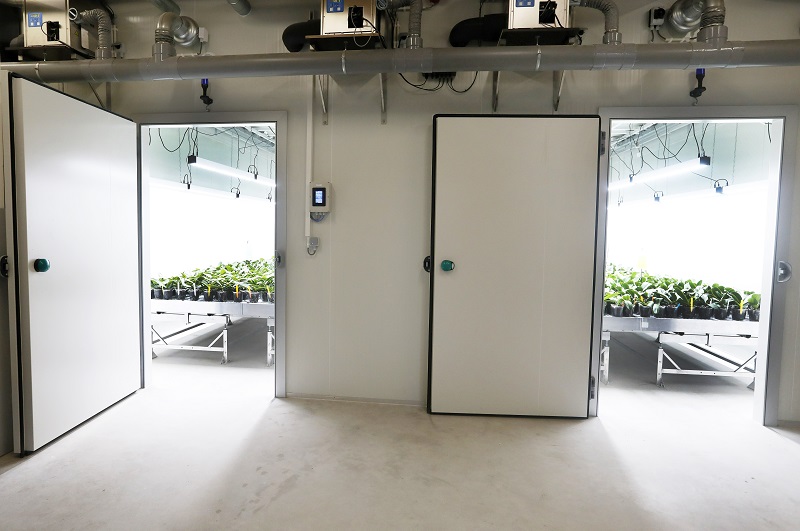
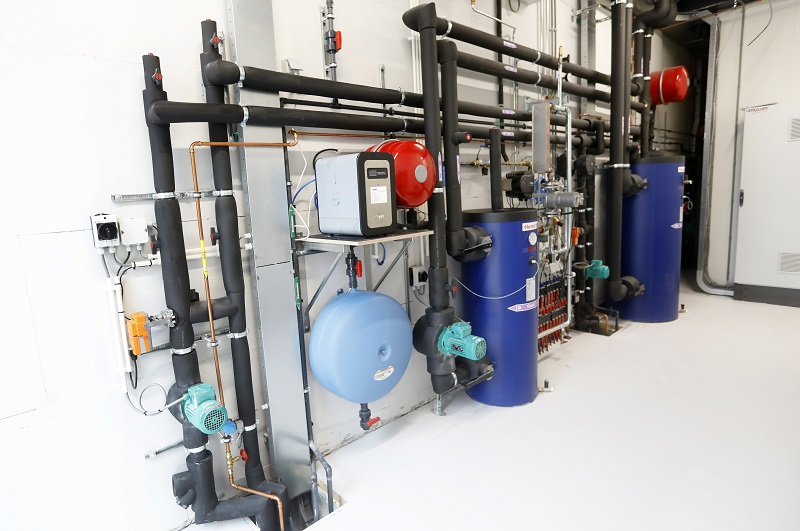
Focus on knowledge development
Seed breeders are looking for ways to speed up the breeding process, light producers want to optimize the specifications for luminaires and are interested in the best light recipe for various crops. In all research, Plant Lighting strives for knowledge development, says Sander Hogewoning. "When we get a research question, first we dive into the literature and formulate a hypothesis to be tested. This way, we not only answer the question, we also understand the reason why. In the long term, this will get you further than trial-and-error."
Substantial expansion of capacity
With the six new climate rooms in addition to the three older climate rooms, Plant Lighting has a lot of extra research capacity. Four rooms are divided into smaller cabins in which a large number of variants can be tested under the same conditions. On small growing areas, different light colors, light intensities or day lengths are offered at the same temperature and humidity. Two climate chambers are equipped with cultivation tables for tests where larger surfaces are desired. The new rooms have a wider range in temperature and humidity. "We can also control the conditions in these chambers more stable, more precisely and more robustly," says Sander Hogewoning.
Customized controls
Nijssen's Automation team fine-tunes the control software in close collaboration with the Plant Lighting researchers. For example, the number of adjustable time intervals for Plant Lighting has been increased. "That is an important improvement for us", emphasizes Sander Hogewoning. "We can now define 10 periods in 24 hours, each with its own CO2 level, temperature and RH. The course between the settings is also adjustable: abrupt or gradual transitions. That is very important when simulating the climate in greenhouses. After all, in greenhouses there is no abrupt transition in light and temperature. A simple on/off-switch for the lighting is therefore much too abrupt. Nijssen's control software now gives us the opportunity to simulate the climate in a greenhouse even more accurately in a fully conditioned room. With this range of options, we regard the climate chamber as an optimal research facility. We expect that more and more research will take place in climate chambers in the near future."
Plant Lighting is a private research institute, specialized in the effects of climate on plant growth and development. The company translates scientific plant physiological knowledge into practice and thus contributes to the innovative power of greenhouse horticulture and breeding.






